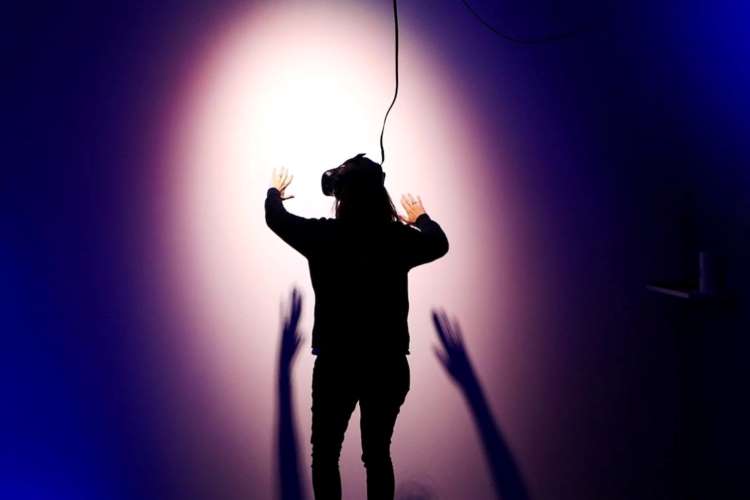
If you haven’t heard of metaverse marketing, you’re not alone. But don’t let that mislead you; metaverse marketing is touted as nothing less than the future of marketing. Although still in its infancy, a number of companies have started using it to great effect. Ikea, for example, has created a virtual showroom where customers can browse furniture and see how it would look in their homes before they buy it. BMW has also created a virtual test drive experience so that potential customers can experience what it’s like to drive one of their cars without having to leave their living rooms.
So, what is metaverse marketing? It is a heady cocktail of 3D, virtual reality (VR), augmented reality (AR) and blockchain. In other words, it’s a new, immersive, interactive way to reach your target audience. A recent survey of marketing professionals found that nearly half the respondents believe that metaverse marketing will be “very important” to their business in the next five years.
READ I India’s economy from Nehru to Modi – a conversation with Pulapre Balakrishnan
Metaverse marketing offers a number of advantages over traditional marketing techniques. First, it allows businesses to create realistic simulations of their products or services. This means that customers can try before they buy, which reduces the risk of buyer’s remorse. Second, Metaverse Marketing is highly personalized. Customers can choose their avatars and interact with brands in a way that feels natural to them. Third, Metaverse Marketing is interactive and engaging. Customers are more likely to remember an experience they had fun with than one that was routine or tedious.
In PR and external relations, we usually use the term Confidence Building Measures (CBMs); here are a few CBMs strongly indicating that Metaverse is here to stay.
CBM 1: Trends and data on metaverse marketing
- Internet searches for the term “metaverse” rose 7,200% in 2021.
- The keyword “metaverse” generated 240 million results on Google this year, up from 164 million last year.
- Metaverse was tweeted over 1,800 times per hour on Twitter in 2021, and #Metaverse resulted in more than 1.1 million posts on Instagram.
- In 2021, metaverse-related companies reportedly raised upward of $10 billion, more than twice as much as they did in the previous year.
A report by Gartner has predicted that by 2026:
- 25% of people will spend at least one hour a day in the Metaverse to work, shop, attend school, socialize, or consume entertainment.
- At least 30% of the organizations in the world will have products and services ready for Metaverse.
- The global market for Metaverse is projected to reach a size of US$758.6 Billion, growing at a CAGR of 37.1%.
CBM 2: Web 3.0
Metaverse, in effect, will replace many of the things done on websites today. Web 3.0—the backbone of the Metaverse—offers a new channel to play with, not controlled by a few tech companies but relies on blockchain technology, machine learning and artificial intelligence. Therefore, increasingly high levels of consumer adoption will propel fundamental change.
CBM 3: Rise of creator economy
The Metaverse needs content creators, i.e., an army of talent, to fill its virtual space with interactive and immersive content, thanks mainly to advances in VR and AR. In contrast, creators need a space to grow their full potential. Therefore, Metaverse could be the future of the creator economy. The relationship between Metaverse and the Creator Economy looks like a pre-arranged marriage. Both cannot survive without the other.
CBM 4: Wider set of use cases
Gaming in the Metaverse already has mainstream traction. Consumer use cases are now expanding into new immersive retail, entertainment, sports, and educational experiences. Also, there are Metaverse’s sizable but less talked about enterprise applications and opportunities, including virtual employee training and team collaboration with avatars, virtual prototyping in manufacturing and construction, and virtual-showroom displays for products such as cars.
CBM 5: The ‘avatar’ pull factor
One of the most important elements in the Metaverse is one’s own Avatar. It has been widely reported that people are willing to spend dollars to buy virtual products and dress up their avatars to depict their vision of themselves in a virtual world.
CBM 6: Rise of interest-based communities
Interest-based community marketing could potentially take centre stage in this new virtual realm of opportunities, bringing together a significant number of communities centred around specific interests and enabling marketers to create specific and targeted campaigns.
CBM 7: Continuous technological advances
Cloud and edge computing with intensive large-data processes, such as graphics rendering, are seeing improvements. At the same time, the upcoming 5G will enable mobile devices to access these large worlds more easily. Also, the cost of production for augmented and virtual reality hardware is declining.
CBM 8: Demographic tailwinds
The oldest Gen Z consumers are in their mid-20s now. Increasingly, they are an income-earning force to be reckoned with. These consumers are more familiar with virtual worlds, transactions, and goods than previous generations are.
The Metaverse could be the next frontier of the internet, taking virtual experiences to the next level and giving organizations opportunities to reach consumers in new and innovative ways. It has the potential to change many technologies, standards, conventions, and monetization models and will have a profound generational change. Most importantly, it will reach many new categories marketers have long hoped for.
The metaverse is becoming popular by the day. In China, there are already metaverse platforms with millions of users. And in India, a few metaverse platforms are starting to gain traction for businesses, creating avatars to represent their brand and interact with potential customers. Also, we will see many more virtual stores where people can browse and purchase products. The possibilities are endless. And with the number of internet users in India set to double in the next five years, now is the time to start exploring the metaverse marketing opportunity.
(Atul Raja is Executive Vice President, Global Marketing at Wadhwani Foundation.)
